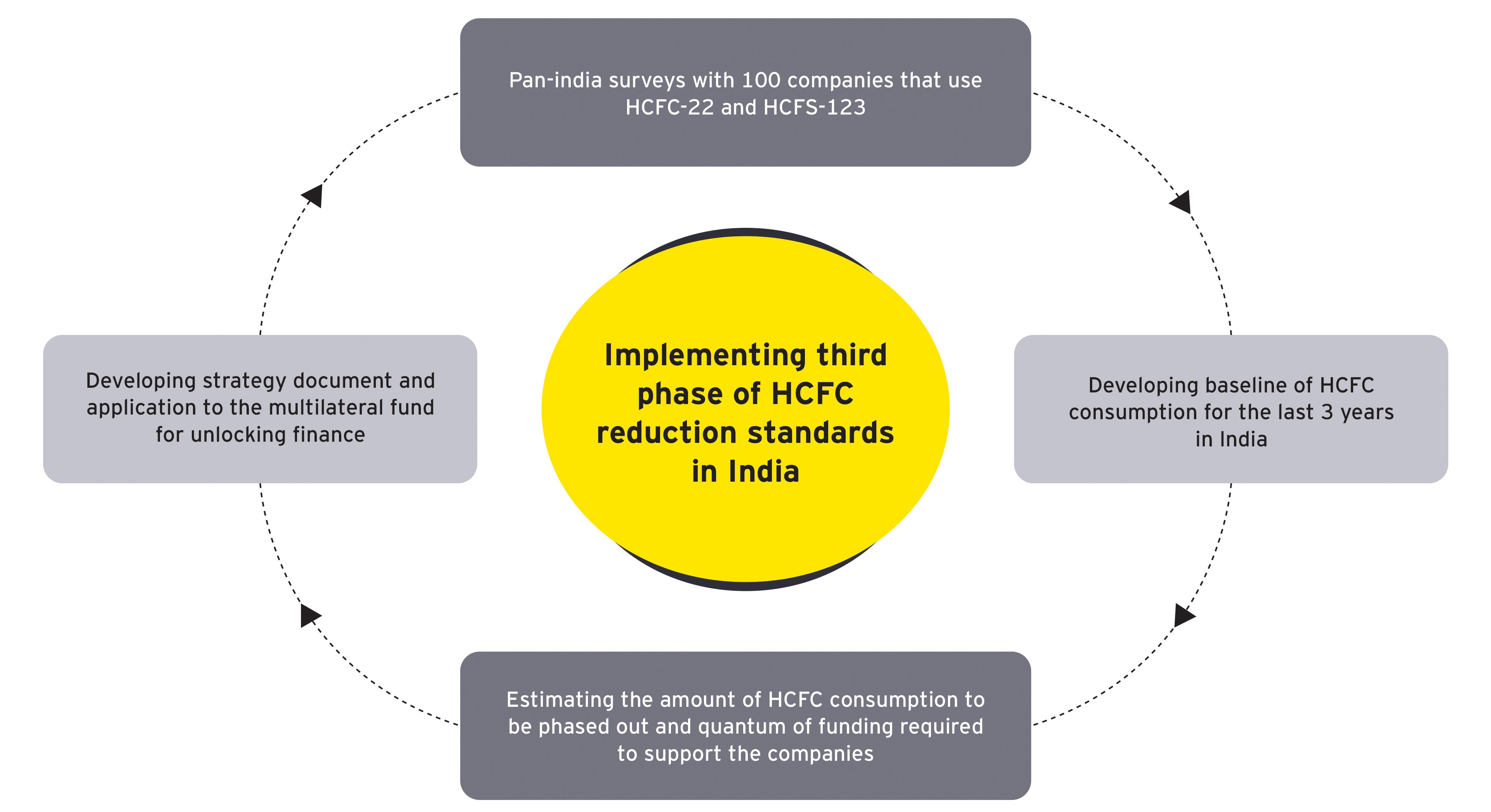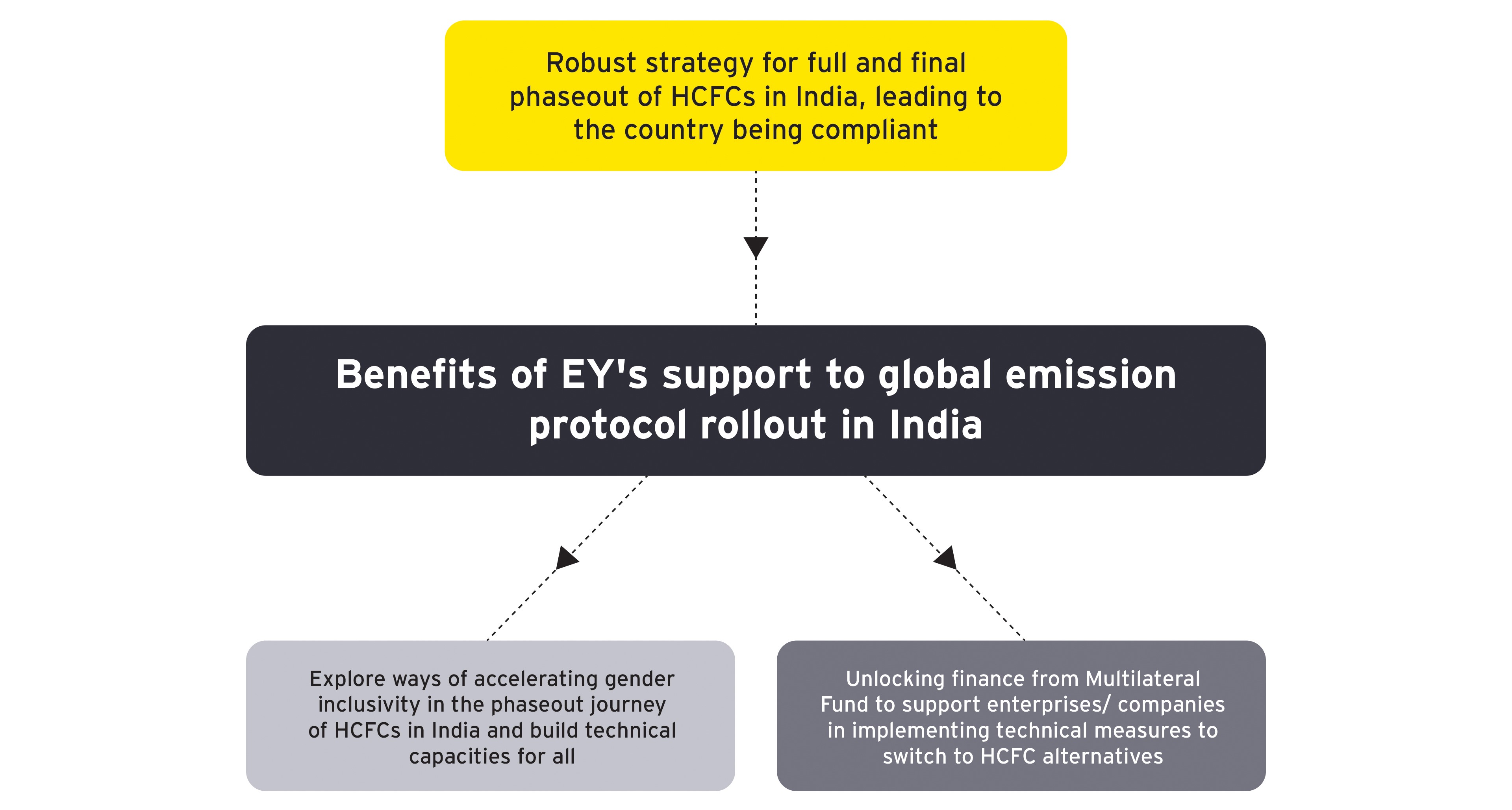
How can we execute a pan-India phased plan for emission reduction?
India is among the top producers of hydrochlorofluorocarbons (HCFCs) globally and this has serious environmental consequences, including contributing to ozone layer depletion and climate change. The country is a signatory to a global emission protocol of an international body which mandates phaseout of 97.5% of HCFC by 2030. Accordingly, the Government of India introduced a program intended to achieve this objective of 97.5% phase-out by 2030 and complete phase-out by 2040.
The program, categorized in three stages, has the objective to plan and implement a phased reduction of HCFCs as per international standards. While the first stage has concluded, the second stage of the program is currently underway. Given its magnitude and complexity, the Government needed a technical expert with the competency and experience to work with the international body to plan and implement the third and final stage of the program.
Figure 1: Core elements of third phase of program for reducing HCFC emissions in India

EY’s technical competency, wealth of knowledgeable climate professionals and pan-India presence were critical factors for the Government of India to choose EY as an implementation solution provider.

EY built and implemented a comprehensive program strategy.
EY adopted a comprehensive approach to facilitate holistic, contextual, and equitable action plan for implementation of the phase in many sectors which emit HCFCs, including:
- Refrigeration manufacturing
- Air conditioning manufacturing
- Polyurethane foam manufacturing
- Refrigeration and air conditioning servicing
EY also conducted six stakeholder consultation workshops to maximize information dissemination to sensitize the identified list of enterprises about policies and funding guidelines, national regulations, need for phase out and the alternative non ODP (Ozone depleting potential) and low GWP (Global warming potential) options. Based on recommendations from stakeholders, EY finalized the draft sector-specific action plans and national strategy.
In terms of strategy development, EY leveraged stakeholder connects and resources to reach out to refrigeration and air conditioning (RAC) sector and firefighting sectors and shortlisted enterprises based on responses received to support various elements of the program. Subsequently, EY also conducted physical site verification of approved enterprises to ascertain their authenticity. Finally, EY also supported decision making on funding eligibility for enterprises.

Enabling compliance with minimal impact on economy and industry.
EY facilitated India’s compliance with the international protocol targets with minimal impacts on the national economy, on environment and on occupational health. We implemented a combination of interventions such as technology upgradation investments decision support, technical assistance, training and capacity-building, awareness, and education, monitoring and management, in selected HCFC consuming sectors, contributing to achieve complete phase out of consumption of HCFCs.
Figure 2: Core benefits of EY’s strategic support for Montreal Protocol rollout

Related content
Contact us
Interested in the changes we have made here,
contact us to find out more.


